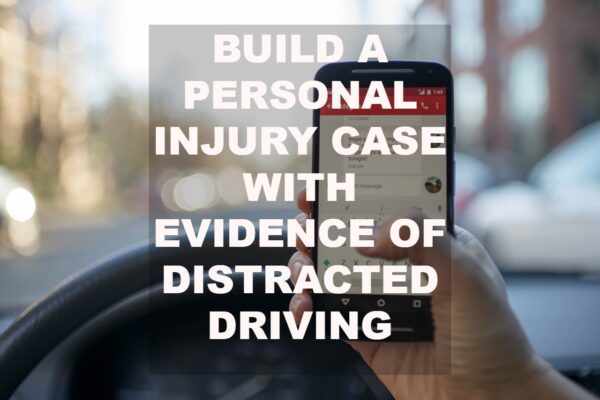
Distracted driving accidents are a serious, persistent problem that plagues our streets, roads, and highways. Each year, distracted driving accidents account for over 3,000 fatal crashes in the U.S. alone. Driving distracted is not only a danger to all drivers, but it poses a threat to vehicle occupants, pedestrians and bicyclists as well. Though the National Highway Traffic Safety Administration (NHTSA) partners with states to raise driver awareness to prevent distracted-affected crashes, the occurrence of distracted driving accidents continues.
In Maine, three laws have been enacted in recent years relating to distracted driving. In particular, a person cannot operate a motor vehicle while texting messages. Fines can be up to $500 in some instances, with the suspension of license for repeated offenders. Maine also has laws that focus on preventing young drivers from driving distracted. Drivers under 18 years of age cannot operate a motor vehicle while using a cell phone or any handheld electronic device. If you are under 18 years old you cannot manipulate, speak into or interact in any way with a cell phone or handheld electronic device while driving. Fines range from $50 for the first offense to $250 for the second or subsequent offense.
If you are injured as a result of a distracted driver you may have the basis for a personal injury case. To understand the broader scope of distracted driving, what it entails, and what you can do if you are a victim or witness distracted driving, read on.
What is considered distracted driving?
Distracted driving is any specific activity that results in driver inattention or that which diverts a driver’s attention from driving. Though much well-earned attention is given to cell phones and electronic devices as a source of distraction, driving distracted relates to a host of activities. Yes, talking or texting on your phone is a source of distraction while driving, but so is eating and drinking, adjusting your rear view mirror or seats, speaking with or looking at the other people in your vehicle, changing the stereo, entertainment or navigation system, and even looking at objects, scenery or events outside the car like wild animals on roadside or a previous crash.
Why is distracted driving dangerous?
Essentially, even if it is only a few seconds, the danger of distracted driving is the equivalent of closing your eyes and driving. A driver that takes his or her eyes off the road for just five seconds while traveling at 55 mph will have traveled the length of a football field in that time. Five seconds is about the time it takes to pick up a cell phone to view a text message, and even less to run into the back end of a car, strike a utility pole, or a pedestrian.
Why is distracted driving a problem?
The problem with distracted driving is that it diverts a motorist’s attention from driving. Distraction can lead to a chain reaction in which a driver misses critical events happening on the roadway. This could be traffic signs, pedestrians, objects, or any cue that could anticipate a potentially dangerous or hazardous situation that could lead to losing control of your car or lead to a crash. Perhaps an even greater problem with distracted driving is that drivers not only place themselves at risk while playing with the radio or reaching for their cell phone, but everyone else or anything on or near a roadway is placed in jeopardy. The sad fact is, one out of every ten fatal crashes that occur in the U.S. are a result of distracted driving.
How do I report distracted driving?
Distracted drivers are a major concern for everyone when it comes to traffic safety. Texting while driving isn’t just a problem relating to teens, but is a serious concern among all age groups. Reporting distracted driving incidents raises the visibility of dangerous driving behaviors and promotes more awareness of the need for distracted driving solutions.
If you witness a distracted driver put a safe distance between you and that car by slowing or pulling away from it. You are not the police so do not follow or even attempt to stop the driver. Compile evidence instead. Take note of specific information such as the license number, make, model and color of the car, and any other feature that may stand out such as erratic braking, swerving, tailgating or sitting through traffic lights. Report a dangerous situation by pulling over and calling 9-1-1 to share the specific information you have witnessed.
How to file a distracted driving claim?
If you have been injured as a result of a distracted driving accident, it’s within your rights to file a personal injury claim against the responsible party. As with any personal injury lawsuit related to a car accident, a personal injury suit stemming from distracted driving would generally follow the same general steps. To file a distracted driving claim consult with a car accident lawyer to discuss the possibility of filing a lawsuit. Your attorney will discuss your legal options and interpret Maine distracted driving laws for you.
It’s important to remember that no one can drive safely unless the act of driving has your full attention. Anything at all that does not relate to the activity of driving the vehicle is a potential distraction and increases the risk of a distracted driving accident. If you have been in or are a victim of a car accident as a result of a distracted driver, contact the leading experts in Maine accident law, the attorneys at Hardy, Wolf and Downing for legal assistance and representation.

